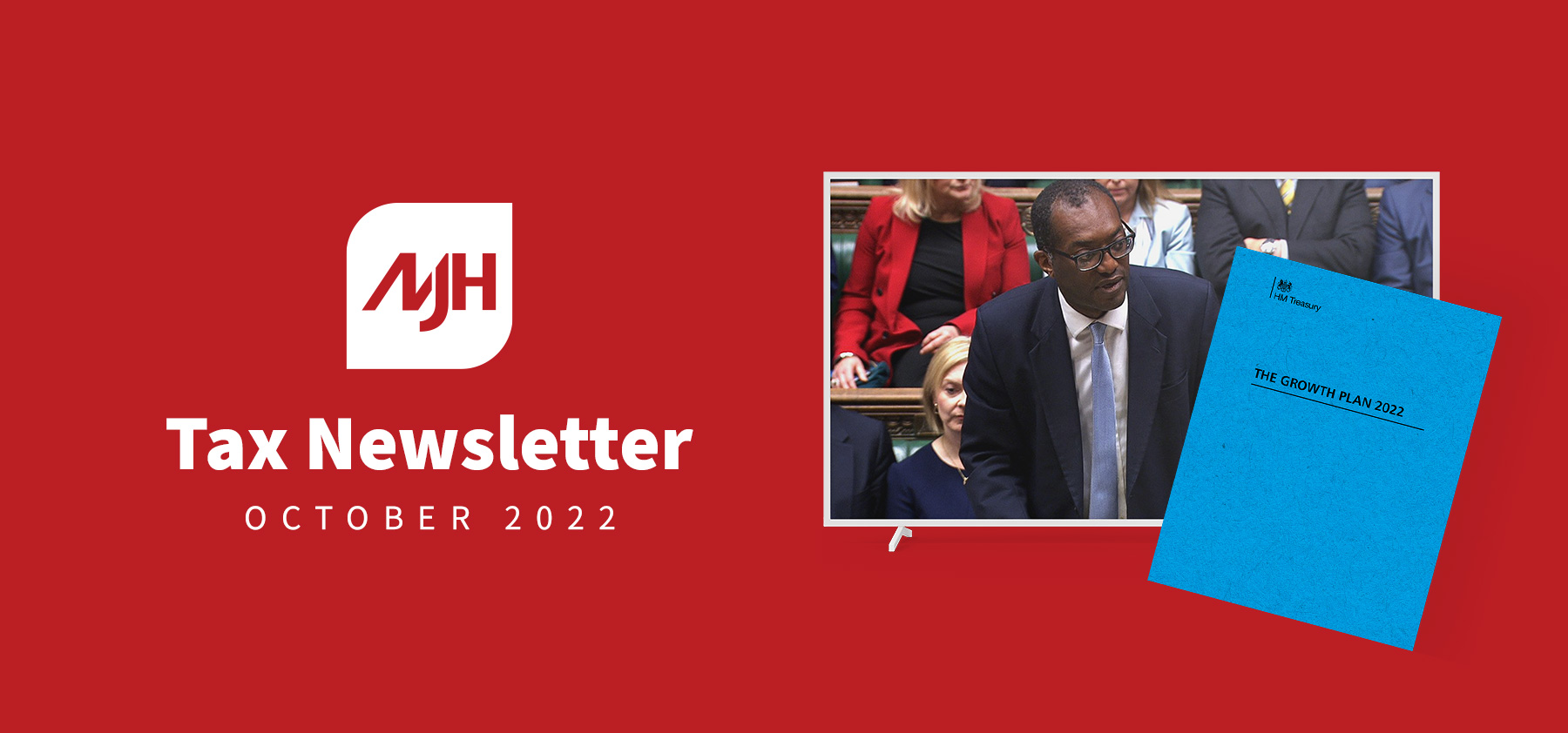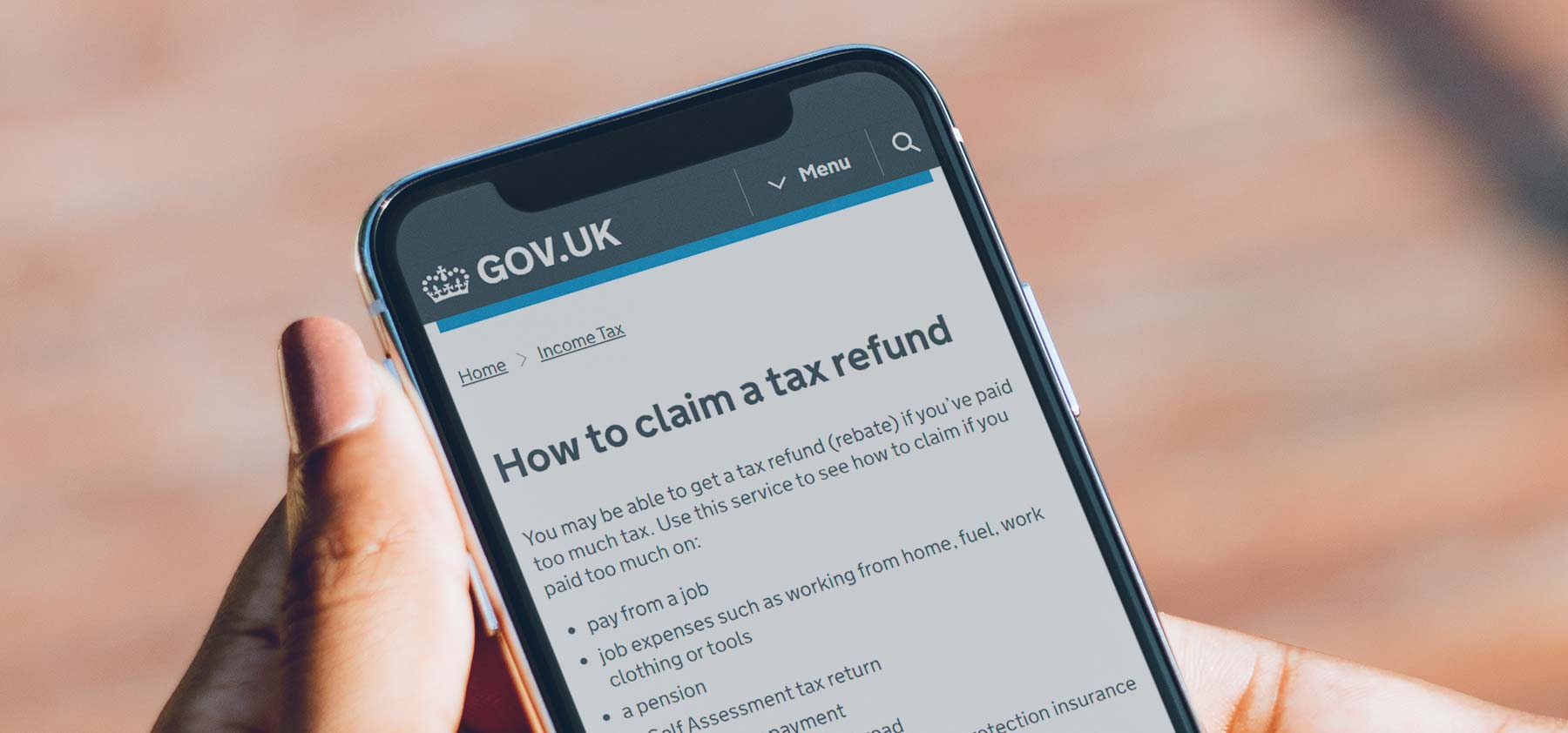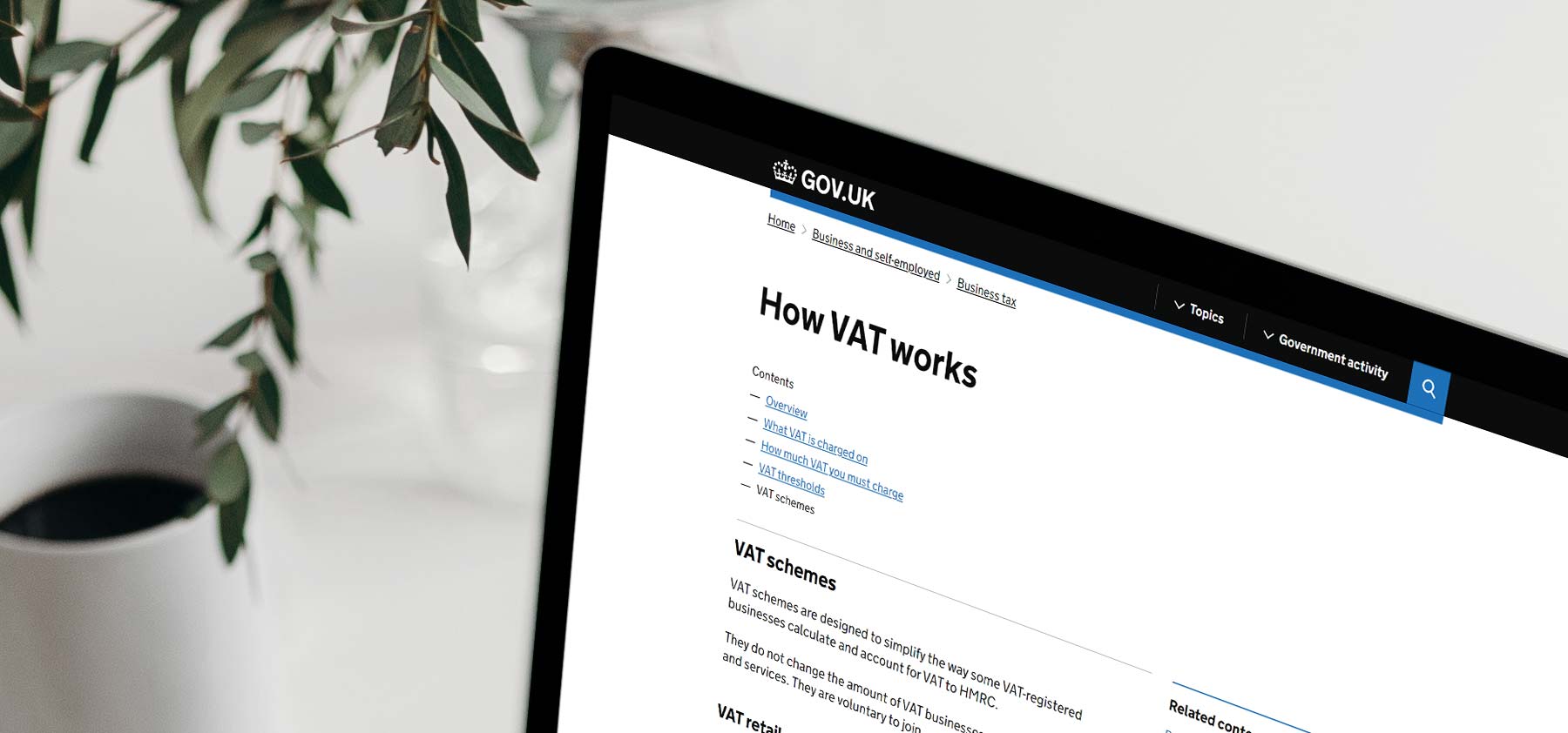
Mini Budget Summary
A mini budget for growth
On 23 September 2022 in what has been termed a ‘mini budget/fiscal event’ the new Chancellor, Kwasi Kwarteng, delivered a package of more than 30 measures intended to tackle high energy bills, drive down inflation and cut taxes to drive growth. The proposal that stood out was that the ‘additional’ tax rate of 45% (applicable on incomes over £150,000) was to be abolished. However, a week later this was reversed and the ‘additional’ 45% tax rate stands.
Income Tax changes
The level of personal allowances also remain (for the moment), meaning that taxpayers earning more than £125,140 will still receive no personal allowance.
The increase in dividend rates originally announced by the previous Chancellor in Oct last year is to be reversed such that as from 6 April 2023 (2023/24 tax year) the income tax rates for England and Northern Ireland will be:
| Earnings band(after allowances) | On earnings and profits | On dividends |
| Basic rate (0 to £37,700) | 19% | 7.5% |
| Higher rate (above £37,701) | 40% | 32.5% |
| Additional rate (above £150,001) | 45% | 38.75% (to be confirmed) |

NIC changes
The rates of class 1 NIC have also been reversed back to the levels in place on 5 April 2022 but the rates imposed from 6 July 2022 to 6 November 2022 remain. Therefore for all employees (except directors paying NIC cumulatively) the tax year will effectively be split into two – the first period for the first seven months of the tax year (6 April to 5 November 2022) and the second for the remaining five months (6 November 2022 to 5 April 2023). The calculation means that over the year the main Primary rate payable by the employee will be 12.73% (i.e. seven months at 13.25% and five months at 12%) and the main Secondary rate payable by the employer will be 14.53% (15.05% and 13.8%). Corresponding rates of Class 4 NIC for the full tax year 2022/23 will be 9.73% and 2.73% (a reduction from 10.25% and 3.25% to 9% and 2% respectively).
The figures are as follows:
Employees’ class 1 NIC
12% on earnings in the band: £1,048 to £4,189 per month (£12,570 to £50,270 per year)
2% on earnings above £4,189 per month (£50,270 per year)
Employers’ class 1 NIC
13.8% on earning above £758 per month (£9,100 per year)
The employment allowance remains at £5,000.
Care will be needed should there be a payroll run around the change over date. If the software has not been updated in time payments may have to be made using pre- 6 November percentages and any underpayment sorted out in the following payroll run.
The new Health and Social Care Levy, originally planned to be introduced on 6 April 2023, is to be cancelled.
Other key tax announcements
The statement included the reversal of a string of other planned tax rises including the increase to 25% in corporation tax rate originally set for 6 April 2023 — this remains at 19%. Planned beer, wine, cider, and spirits duty rate increases have also been cancelled and overseas shoppers can now shop sales- tax free in the UK.
The Annual Investment Allowance is a valuable tax break providing a 100% tax deduction for up to £1m of plant and machinery purchased in a year. This cap was due to be reduced to £200,000 on 1 April 2023 but will now be kept at £1m indefinitely.
Queries remain over the application of the ‘super relief’. Under this relief qualifying expenditure on new plant and machinery incurred from 1 April 2021 to 31 March 2023 receives 130% tax relief effectively allowing 24.70% tax relief on expenditure (130% x 19%). Now that the corporation tax rate is being retained at 19% from 1 April 2023, we await further announcements as to whether this relief will remain.
The Enterprise Investment Scheme, providing tax incentives for individuals to subscribe for shares in unquoted trading companies, was due to end in 2025 but has now been extended for an undefined period. The similar Seed Enterprise Investment Scheme providing tax relief for investment in small trading companies also remains in place with increases in the annual investment caps of £100,000 per investor, £150,000 per company.
IR35 reversal
IR35 never really went away – the rules just changed. Now from 6 April 2023, another change means we are back to the original 2017 rules. The off-payroll working variants for the public sector (from 6 April 2017) and for large private sector organisations (from 6 April 2021) are to be scrapped. It will now be up to the directors of the intermediary companies to decide whether there would be an employment relationship between the worker and the engager, if all intermediaries in the chain are ignored.
Stamp Duty Land Tax
As from 23 September 2022, the threshold from which SDLT must be paid on the purchase of residential property had doubled from £125,000 to £250,000. This means that the 2% tax rate has been abolished, saving purchasers a potential £2,500.
Are you too late to claim a tax repayment?

Claims for repayment of tax are usually made via submission of a tax return, e.g. a self-assessment repayment claim is made by completion of the section on page TR7. Whether as an individual or a company the time limit for amending a tax return is usually one year from the deadline for submitting the return.
The amendment may result in a repayment of tax but if the time limit for amending a return has passed then the only way a taxpayer can claim is via an overpayment relief claim. Under this relief, the general rule is that repayment cannot be claimed more than four years after the end of the tax year to which the claim relates for personal taxes (i.e. for a 2018/19 tax return claim the deadline is 5 April 2023), and four years from the end of the accounting period for corporation tax after the end of the relevant tax year.
How to claim
The claim process should be relatively straightforward; however, this is one occasion whereby HMRC insists that the claim is in a set format or it can be refused.
The claim must be in writing, signed by the taxpayer themselves or someone entitled to sign on their behalf, e.g. a person who has a lasting power of attorney for the taxpayer’s financial affairs, but not an accountant. For a company, the claim must be signed by someone with authority to sign for the company, e.g. a director.
HMRC requires the claim to clearly state that the person is making a claim for overpayment relief. The best way for doing that is to quote the section of the taxes acts under which the repayment is being made (i.e. ‘This claim is being made under Sch 1AB Taxes Management Act 1970‘ for personal taxes, or ‘para. 51 schedule 18 Finance Act 1998‘ for corporation tax. The claim must also:
– identify the tax year or accounting period for which the overpayment or excessive assessment has been made
– state the grounds on which the person considers that the overpayment or excessive assessment has occurred
– state whether the person has previously made an appeal in connection with the payment or the assessment
– if the claim is for repayment of tax, provide documentary proof of the tax deducted or suffered
– state the amount of overpayment
– the tax year to which the overpayment relief relates
– state why the overpayment arose
– the amount of tax that has been overpaid
– whether an appeal has been made in the past in connection with the overpayment; and
– if the claim results in a refund, proof that the tax being reclaimed has been paid.
– include a declaration signed by the claimant stating that the particulars given in the claim are correct and complete to the best of their knowledge and belief
When the claim will be disallowed
In HMRC’s manual ‘Self assessment Claim’ under the section ‘SACM12065 – Overpayment relief: Exclusions’ it is stated that HMRC will not accept an overpayment claim where the tax charged is excessive in any of the following circumstances (examples of each are also given):
– a mistake in calculating the tax liability, and that liability was calculated in accordance with the practice generally prevailing at the time. Where the mistake is in a PAYE assessment or calculation, the practice being as generally prevailing at the end of the tax year following that for which the assessment or calculation has been made.
– a mistake in an election, claim or notice
– a mistake in the allocation of expenditure to a pool for capital allowances purposes or the bringing in of a disposal value for such purposes
– The claimant knew (or should have known) of the grounds for the claim before the latest of the date an appeal relating to the tax charged was determined by a court or tribunal, the date on which such an appeal was withdrawn by the claimant, and the date by which such an appeal could have been made
– The tax was due as a result of proceedings by HMRC against the claimant or under an agreement in settlement of any such proceedings
– The claim is made on grounds that have been already put to a court or tribunal in the course of an appeal.
Landlords – make sure you claim all the expenses you can

Whatever the reason for becoming a landlord, expenses will be incurred relating to that property at some time or another. Unfortunately, just because a payment has been made does not necessarily mean it is allowable for tax. Even if the payment is allowable, when tax relief can be claimed depends on the nature of the expense and the method by which the accounts are prepared.
The default basis for preparing letting accounts is the ‘cash basis’ where income is recognized when received and expenses when paid (providing that the expense is incurred ‘wholly and necessarily’ for the letting). The ‘accruals basis’ must be used where rental income exceeds £150,000 a year or the property business is run by a company. Under the ‘accruals’ basis, income is taxed when it is earned and expenses incurred rather than when paid. However, a landlord who is eligible for the cash basis can choose (‘opt’) to use the accruals basis if more beneficial to do so.
Usual day-to-day running expenses
To be allowable the expense should be incurred ‘wholly and exclusively for rental. On their website, HMRC gives a list of claimable expenses you would expect to see including house insurance, letting agent’s fees, management fees, ground rent, water rates, and council tax (where not already paid for by the tenant), and restricted mortgage interest relief.
Other claimable expenses
Such expenses include rent insurance, expenses related to landlord regulations (e.g. Gas Safety Certificates/checks, EPCs, purchase of smoke and carbon monoxide alarms), legal expenses relating to eviction, cleaning services including end of tenancy cleaning, regular cleaning for Houses of Multiple Occupation and common areas when dealing with commercial lets.
Problem areas
Queries can arise when claiming what are termed ‘dual purpose’ expenses. A typical cost under this heading relates to expenses incurred in running a car used partly for the rental business and partly for private purposes, the business part being allowed. The two methods of calculation permitted are:
– 45p for the first 10,000 business miles incurred and 25p for any additional business miles or
– by totalling all costs (car tax, insurance, repairs, petrol, AA/RAC subscription), recording the mileage of every property-related trip made in the tax year and the total mileage, then claiming the proportion relating to the business mileage.
Administrative costs incurred in the running of a letting business can be claimed but again only if incurred ‘wholly and exclusively’ for letting purposes (e.g. phone bills, stationery, postage, accountancy fees). With phone bills the business proportion is claimed by working out the actual cost. Unfortunately, landlords cannot claim for their own time but a claim is possible to cover the additional electric, water etc that might be spent from running the business from home under the ‘simplified expenses’ claim. The claimable amount is calculated by using a flat rate based on the number of hours worked from home each month so long as the number of hours exceeds 25 hours or more a month as follows:
| Hours of business per month | Flat rate per month |
| 25 to 50 | £10 |
| 51 to 100 | £18 |
| 101 and more | £26 |
Capital items
Another confusing area concerns the purchase of ‘white goods’. Increasingly landlords are obliged to purchase such items for tenants and assume that the cost is immediately claimable. However, for tax purposes the initial cost is a ‘capital’ expense and under the accruals basis, capital expenditure is not deducted when computing profits – only revenue expenditure is eligible for deduction. Relief for capital expenditure is instead given under the capital allowances rules and an important point to remember is that capital allowances cannot be applied to residential property (unless a furnished holiday let).
Relief is instead given under the ‘Replacement of Domestic Items’ rules such that it is only when these items are repaired or replaced can tax relief be claimed, providing the item is a ‘like for like’ replacement. Under the cash basis, capital expenditure is simply deducted (as for an expense) in working out taxable profits unless the expenditure is of a type for which relief is specifically disallowed.
Which VAT scheme to use?

Most businesses know that once the tax turnover for a business exceeds the VAT registration threshold (currently £85,000 a year), or it is expected to do so within the next 30 days, VAT registration is compulsory. Some businesses are not required to register (e.g. those offering education and training and some medical treatments) but if registration is required there are several schemes to choose from – which you choose will depend on the type of business and how the business is run.
The different schemes
Apart from the standard accounting method, there are the Cash accounting, Annual accounting, and Flat rate schemes. In addition, various VAT margin schemes exist whereby instead of paying VAT based on an item’s selling price, the tax is based on the difference between the amount paid for an item and the selling price.
Standard VAT Accounting
Under standard VAT accounting, when to assess for VAT is based on the dates on the invoice and receipts, rather than payment dates.
Deregistration is possible if taxable supplies in the next 12 months are estimated to be £83,000 or less unless the business ceases or supplies are suspended for more than 30 days. A business can remain voluntarily registered so long as a taxable trade continues. Notification of deregistration is required within 30 days of ceasing to make taxable supplies, effective from the date of notification or later as agreed with HMRC.
Importantly, many owners of deregistered businesses are unaware that they must account for output tax on any assets the business has at deregistration, where the VAT due on the value exceeds £1,000; this means that an asset of £5,000 or more triggers a ‘deemed supply’. The most likely trigger is the ownership of a building but can also include ownership of commercial vehicles, equipment, and stock on hand. VAT due on deregistration is a deemed supply of the VAT registered business ‘selling’ the assets to the continuing non-VAT registered entity. A claim for VAT incurred after deregistration relating to supplies made before, can be made as can bad debt relief.
Cash accounting scheme
Under standard VAT accounting cash-flow problems can occur should customers take time to pay which is where the Cash Accounting Scheme can prove beneficial. Under this scheme VAT is not included on a return until the customer has paid or the supplier has been paid. A business must leave the scheme at the end of any VAT period where the taxable sales for the previous twelve months have exceeded £1.35 million excluding VAT. Such a business will revert to using the standard accounting method unless full deregistration is made. The final return on leaving the scheme must account for output tax on closing debtors, claiming input tax on any closing creditors – that way the system aligns with the standard method of accounting. Where the change could produce a potential cash-flow problem, VAT on debtors and creditors can be paid over the next two quarters (6 months), as and when payments are made and received. HMRC is not required to be notified when the business leaves the scheme but any outstanding VAT must be paid.
Some businesses may temporarily exceed the threshold and if this happens they can remain within the scheme if it is believed that taxable sales in the next twelve months will be less than the joining threshold, i.e. £1.35 million excluding VAT – again, HMRC is not required to be notified.
Annual Accounting scheme
Under this scheme VAT payments on account are made throughout the accounting year, based on the net liability on the previous year’s return. The annual return and balancing payment are due within two months of the end of the accounting year. Designed to be flexible and simple, it can also be combined with the flat rate and VAT cash accounting schemes if desired. The exit requirements for this scheme are the same as for the cash accounting scheme.
Flat rate scheme
This scheme is only available to businesses with a turnover of £150,000 or less, which will rule out many VAT-registered businesses. Under the scheme the business charges the customer the standard VAT rate but pays a fixed percentage of the gross sales in a period, depending on the business activity, ranging from 4% for food retailers to 16.5% for limited costs businesses. This scheme is most beneficial for those businesses that do not have many VATable expenses to claim.
A business can opt to leave the scheme at any time but must leave if gross sales including VAT have exceeded £230,000 on the anniversary date of joining the scheme or there are reasonable grounds to believe that income for the next 30 days will exceed that amount (capital asset sales excluded). However, if total sales including VAT are expected to be less than £191,500 in the next twelve months, application can be made to remain in the scheme.
October Questions and Answers

Q. My company does not have a credit card and therefore I use my own personal credit card to pay for some expenses – particularly any purchases made online as a credit card gives an extra layer of protection. I also use the card for some personal expenses. Every month I pay the full balance owing on the statement for the previous month from the business bank account. How is this to be treated in the accounts?
A. In effect you are overdrawing your director’s loan account for the personal expenses and repaying it later. HMRC will consider this as a beneficial loan taxable under the benefit-in-kind rules. However, there is a threshold of £10,000 below which the official rate of interest benefit-in-kind charge is not applied. Additionally, where a director or employee receives an advance for expenses necessarily incurred in the performance of their duties, the advance is not treated as a loan, provided that:
a) the maximum amount advanced at any one time does not exceed £1,000;
b) the advances are spent within six months and
c) the director or employee accounts to the company at regular intervals for the expenditure
Therefore, so long as the above conditions are adhered to, then there will be no problem throughout the year. At the end of the year you should calculate the amount paid in relation to personal expenses and make good on that amount – this is usually done via a dividend or you could make reparation from personal resources.
Q. The company for which I am a director has been approached by a local charity to make a donation. The charity is a school attended by a fellow director’s grandchildren. Is that allowed? What are the tax implications?
A. HMRC list three conditions that, if satisfied, will disallow tax relief under what is termed ‘tainted’ donations. All three conditions are required for it to be a ‘tainted’ donation:
Condition A – the donation to the charity and arrangements entered into by the donor are connected.
Condition B – the main purpose of entering into the arrangements is for the donor, or someone connected to the donor, to receive a financial advantage directly or indirectly from the charity.
Condition C – the donation isn’t made by a qualifying charity-owned company linked with the charity to which the donation is made.
Condition B is the condition that might impact on whether the donation is tax deductible. However, if it can be shown that no financial advantage is being gained by the donation (e.g. full school fees are being paid for the school child), then there is no financial advantage being received and the donation is allowed.
Q.I am the sole director of a company and my office is based at home. For historical reasons many of my clients are based in the South of England whereas I live in the North. Therefore I spend most of the week on the road, staying in hotels, returning to my home office on Fridays to undertake administrative work. What can I claim for subsistence? Am I only allowed the daily allowance of £5/£10 per day, or can I claim the actual cost of meals that are likely to cost more than the set allowances?
A:You can claim the full hotel costs and the costs of the meals because these expenses are deemed necessary for the performance of your employment duties. To learn more see HMRC’s Employment Income Manual at EIM31815 – Travel Expenses General -Accommodation and subsistence – include associated subsistence.
The text states that ‘travel expenses’ for this purpose include the actual travel costs ‘together with any subsistence expenditure and other associated costs that are incurred in making the journey. This includes:
– any necessary subsistence costs incurred in the course of the journey
– the cost of meals necessarily purchased whilst an employee is at a temporary workplace
– the cost of the accommodation and any necessary meals where an overnight stay is needed – this will be the case even where the employee stays away for some time’
HMRC gives examples at EIM31816 that mirror your situation (example 2).
Also see HMRC Guidance: https://www.gov.uk/guidance/business-journeys-tax-relief-490-chapter-5
October Key tax dates

1 – Corporation Tax payment 31 December 2021 year-end
5 – Deadline to notify HMRC of 2021/22 tax liability where returns are not currently submitted.
A penalty can be avoided if the tax owed is paid no later than 31 January 2023.
7 – Electronic VAT return and payment due for the VAT quarter ended 30 August 2022.
19 – CIS return for payments made to subcontractors in the month to5 October 2022
22 – PAYE, NIC, and CIS payment (electronic): month-end 5 October 2022
31 – Corporation Tax returns submission: 31 October 2021 year ends
All paper-based Self-Assessment 2021/22 Tax Returns must be received by HMRC.
 Book a No-obligation Discovery Call
Book a No-obligation Discovery Call




 Book a Free Discovery Call
Book a Free Discovery Call

